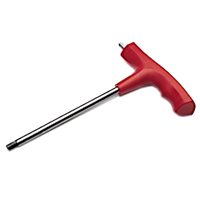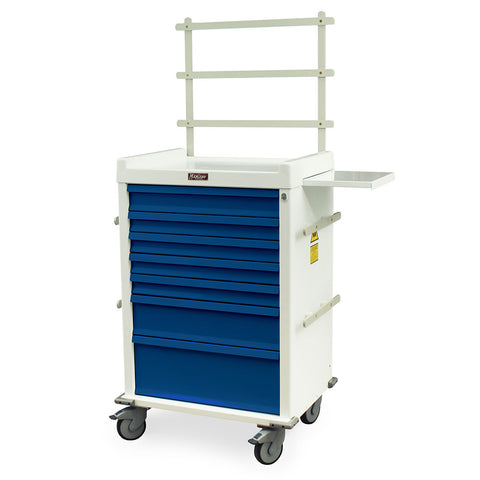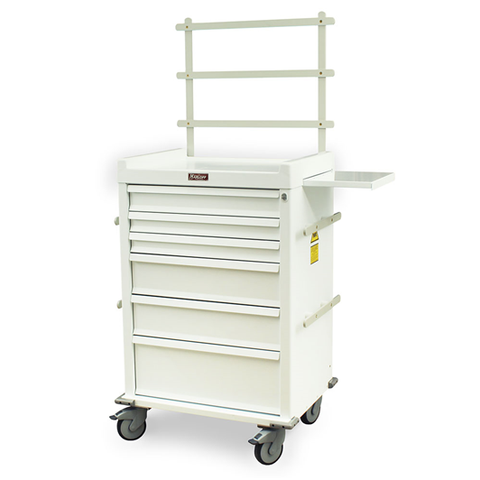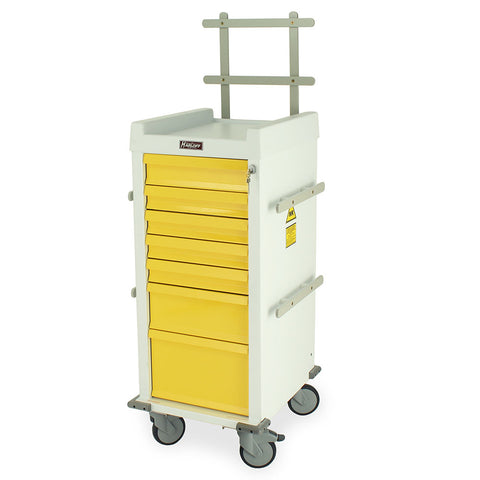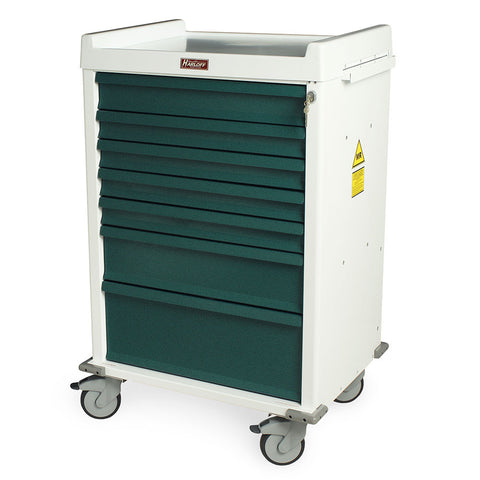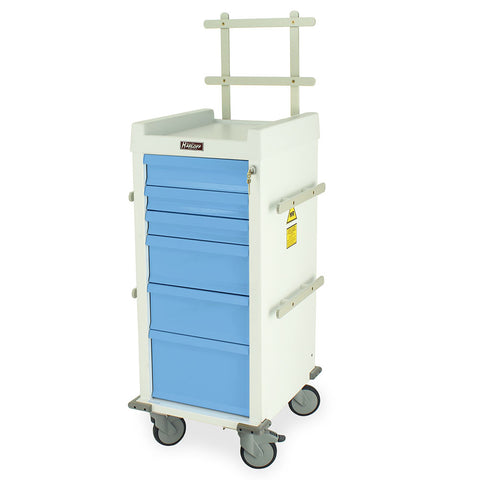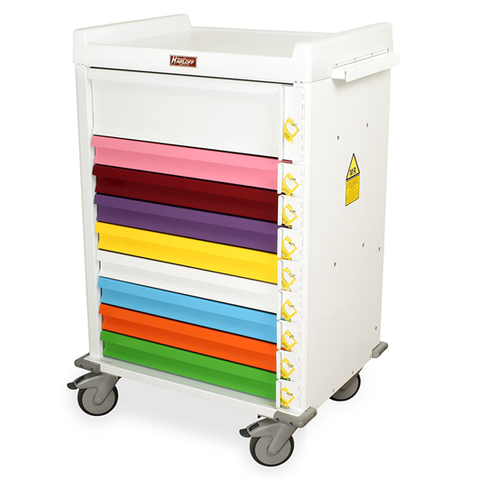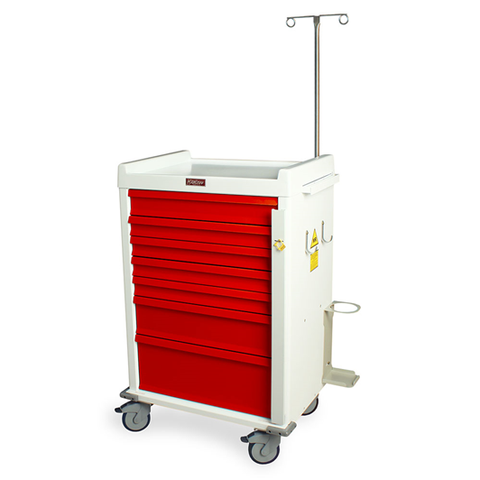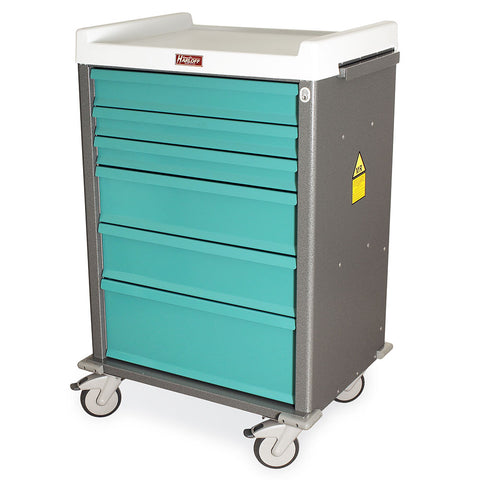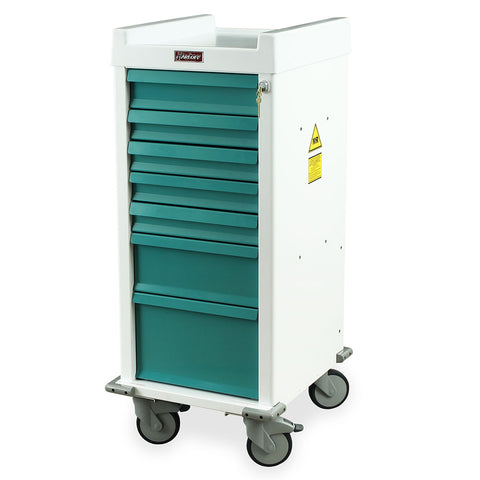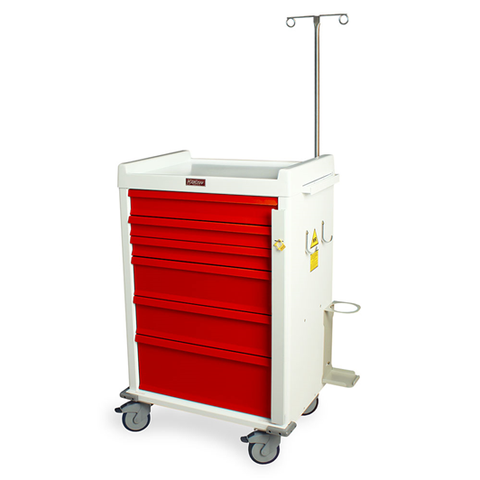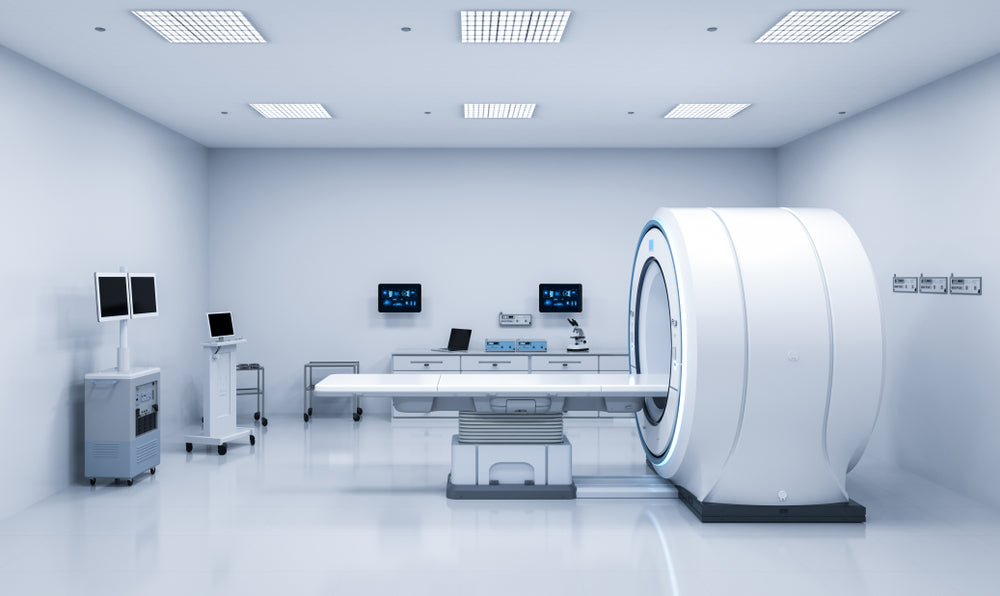
In modern radiology departments, ensuring that every piece of equipment is safe for MRI use is critical. MRI suites have powerful magnetic fields that can pull in ferromagnetic devices, causing severe safety hazards and disrupting imaging quality. This guide explains how healthcare professionals can identify non-magnetic hospital equipment—even if labeling is missing—while introducing MRIMed solutions for safe, high-quality MRI environments.
Introduction to Non-Magnetic Hospital Equipment
Why MRI Safety Depends on Non-Magnetic Devices
MRI safety depends on using non-magnetic equipment to prevent accidents. Non-magnetic devices eliminate the risk of attraction to the scanner magnet, protecting patients and staff. For example, MRIMed’s MRI-Conditional Stretchers are engineered from aluminum and high-grade plastics, providing complete safety in MRI rooms.
Common Issues with Unlabeled or Mislabelled Equipment
Many hospitals face challenges with equipment lacking MR labels. Unlabeled devices create uncertainty, increasing the risk of MRI accidents. MRIMed offers fully labeled products, including stretchers, wheelchairs, and IV poles, to ensure clarity and compliance.
Consequences of Using Ferromagnetic Devices in MRI Suites
Using ferromagnetic devices can lead to severe accidents, including projectile injuries, damage to MRI scanners, and compromised image quality. Hospitals using MRIMed’s non-magnetic gurneys avoid these risks, ensuring both patient safety and operational reliability.
Understanding MR Safe and MR Conditional Labels
What MR Safe and MR Conditional Mean in Current Terminology
MR Safe devices pose no hazard in any MRI environment, while MR Conditional devices are safe under defined conditions (e.g., specific field strengths). MRIMed products like MRI-Conditional Wheelchairs provide precise labeling with conditions clearly outlined.
How ASTM F2503 Standards Define Equipment Safety
ASTM F2503 establishes MR Safe, MR Conditional, and MR Unsafe definitions. MRIMed products follow these standards rigorously, with certifications for MRI stretchers and accessories to ensure safety in Zones III and IV.
Limitations of Labels and Why Verification Is Important
Labels alone cannot guarantee safety if damaged or missing. Verification through inspection or magnetic testing is essential, and MRIMed provides documentation and guides for confirming MR safety for every device.
Visual and Physical Inspection Techniques
Checking for Ferromagnetic Metals in Equipment
Inspecting devices for iron, steel, or nickel content is key. Non-magnetic MRIMed stretchers are made entirely from aluminum, titanium, and high-strength plastics.
Identifying Non-Magnetic Construction Materials (Aluminum, Titanium, Plastics)
MRIMed provides detailed material specifications, allowing staff to recognize non-magnetic equipment reliably. For instance, MRI-Conditional IV Poles use aluminum shafts with plastic casters for full MRI safety.
Wheels, Casters, and Fasteners: What to Look For
MRIMed’s MRI wheelchairs and stretchers feature non-ferromagnetic wheels, casters, and hardware, which are designed specifically to prevent magnetic attraction while maintaining durability and smooth maneuverability.
Using Magnetic Testing Tools
Handheld Gaussmeters and Ferromagnetic Detectors
Using tools like handheld gaussmeters helps detect ferromagnetic presence in unlabeled equipment. MRIMed recommends routine checks alongside visual inspections.
Step-by-Step Magnetic Testing in MRI Zones
Testing involves bringing equipment near the MRI fringe field under controlled conditions. MRIMed provides protocols for stretchers and wheelchairs to verify safety before use.
Interpreting Results to Confirm MR Safety
Understanding detector readings ensures accurate MR safety verification. MRIMed supplies documentation explaining limits for MR Conditional devices, making verification simple and reliable.
Evaluating Equipment by Function and Design
Patient Transport Devices: Stretchers, Gurneys, and Wheelchairs
MRIMed’s MRI-Conditional stretchers and wheelchairs are non-magnetic, safe for all MRI zones, and built for patient comfort. Examples include Adjustable Height MRI Med Stretcher and Non-Ferrous Height Adjustable Stretcher.
Monitoring and Support Equipment: IV Poles, Vital Signs Monitors
Non-magnetic IV poles, monitors, and equipment stands are essential for patient care. MRIMed’s MRI IV Poles are fully non-ferromagnetic and provide reliable support.
Accessories and Small Devices: Tools, Attachments, and Consumables
Even small accessories like clamps, monitor holders, and surgical tools must be non-magnetic. MRIMed ensures that all small devices are either MR Safe or MR Conditional with clear labeling.
Workflow and Safety Protocols for Verification
Inventory Audits and Equipment Tracking
Maintaining an updated inventory prevents unverified devices from entering MRI suites. MRIMed products come with serial numbers and safety documentation for easy tracking.
Staff Training and Awareness Programs
Proper training ensures staff can visually and physically inspect devices. MRIMed offers guidance materials for safe handling and inspection of MRI equipment.
Documentation and MR Safety Record Keeping
Keeping detailed MR safety records for each device is critical. MRIMed provides downloadable certificates and material documentation for every piece of equipment.
Benefits of Proper Identification
Preventing MRI Accidents and Injuries
Correct identification reduces accidents and protects patients and staff from the dangers of ferromagnetic attraction.
Ensuring Optimal Imaging Quality
Non-magnetic equipment eliminates interference, ensuring sharp, artifact-free MRI images.
Reducing Liability and Regulatory Risks
Accurate MR safety verification minimizes regulatory violations and legal risk while supporting accreditation compliance.
Choosing Trusted Vendors for Non-Magnetic Equipment
Verifying Supplier MR Safety Documentation
Always check for ASTM F2503 certification and vendor documentation. MRIMed provides thorough MR safety reports for all products.
Selecting MRI-Conditional Stretchers and Accessories
Choose devices that match MRI workflow needs, such as MRI-Conditional Stretchers with adjustable heights, non-magnetic wheels, and durable materials.
Advantages of Buying from MRIMed
MRIMed offers fully labeled, tested, and documented non-magnetic equipment. This guarantees safety, simplifies verification, and provides long-term reliability in MRI suites.
FAQ:
1. Can I safely use unlabeled equipment in an MRI suite?
No. Equipment must be verified through inspection or testing. MRIMed products come pre-verified to eliminate risk.
2. How do I know if a stretcher is MR Safe without a label?
Inspect the materials and hardware, and conduct magnetic testing. MRIMed’s stretchers provide full material specifications online for verification.
3. Are all non-ferromagnetic materials safe in MRI environments?
Not always. MR safety depends on full device construction and ASTM F2503 compliance, which MRIMed provides for every product.
4. How often should I inspect or retest unlabeled equipment?
Regularly, especially for devices that are moved or modified. MRIMed recommends following their provided maintenance schedules for stretchers and accessories.
5. What should I do if a device fails magnetic testing?
Remove it from the MRI suite immediately and replace it with verified MR Safe or MR Conditional equipment from MRIMed.
Related Articles
